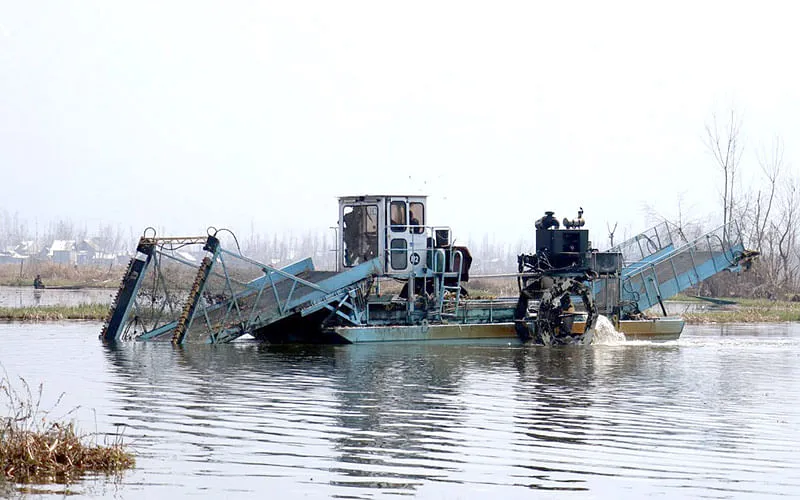The world has realised at great cost of time, resources and lives that transformation of life necessarily needs to be characterised by positive sum game features. In other words, the development to aspire and endeavour for should be inclusive and sustainable. The term inclusive itself has multiples of components and dimensions. The target groups for inclusion in any development intervention has diversity in the level and nature of stakes involved – inclusion of one may be as a productive provider while inclusion of another may be to avoid deprivation of access to potential benefits, for instance; there could even be ethnic dimensions. Further, the understanding of the term Sustainability has gone much beyond the one provided first by the report on Our Common Future of the Brundtland Commission; it now covers aspects of finance, food security, social peace, shared prosperity, gender justice, child rights and many more.
Now all these assurances are to be provided by any development under process and being experienced. This understanding of development has two aspects: one a moral aspect and another of components. In the case of the Kashmir region, the moral aspect of development has to address the inclusion and the sustainability issues head on. Further, the moral aspect has two more components of governance to be treated head one. First, there is the need for establishing the hitherto weak connect between the government and the public. Second, the evolving development should be able to address the Federal Issues in a convergent way.
Coming to the component aspect of development, I must hasten to say that development is no longer considered a result of one-shot kind of intervention and single-dimensional phenomenon. While it was earlier considered that development could be brought about by selected emphasis of areas of intervention while ignoring a large section of other areas. In other words, it was considered that development could be made to happen with single-dimensional approaches, but from about the late 1980s it is now emphasised that appreciation of the multi-dimensionality of development process is paramount.
It is in this background that the Kashmir Region can now be the region to provide a global lesson on a comprehensive and inclusive model of development intervention. Here the Dal Lake can be thought of as the initial focal point for evolution of comprehensive and sustainable development strategies in the case of the Kashmir region.
I understand that there have been quite a few studies by various experts from different specialisations. What I endeavour in this piece is a small articulation on how we can think about a comprehensive and sustainable development strategy in the context of this lake.
Now the key word is context. As we all understand, the Dal Lake is an urban lake unlike other lakes elsewhere. So what happens in the surrounding urban areas necessarily constitute a part and parcel of the life-quality of the lake itself. Thus the very thinking about the lake has to start with about the very nature of urbanisation. There has to be a comprehensive and sustainable development model in place before we can meaningfully think of a development model for the lake; no model is sacrosanct in itself and unrelated with another. The urban model should possess adequate provisions for addressing issues relating to land use, demography, education, health, hygiene, waste disposal and other infrastructure. While framing policy interventions on these various dimensions, the approach cannot be stand-alone interventions but one of coordinated, coherent and comprehensive.
If we have a coordinated, coherent and comprehensive urban policy in place, we can start thinking about a coordinated, coherent and comprehensive policy for the lake as well. We are emphasising the necessity of starting with the urban development model in place for any stand-alone intervention for the lake would not be sustainable as the negative externalities emanating from the urban activities would sooner than later compromise any potential benefits from interventions in the lake alone.
The coordinated, coherent and comprehensive policy of the lake should possess inclusive and sustainable characteristics. The lake has to be thought of as one of the key composites of the ecology. While evolving the development model of the lake, a key consideration has to be the health, hygiene and sustainability of the lake. One key determinant in this is the health of the surrounding ecology of the lake, a sub-model of this has to constitute a major component of the holistic lake model. From this we have to be careful of the health, hygiene and sustainability of the water itself. On this would depend the sustenance of the flora and fauna of the lake in a coterminous way with the water in the lake itself. Then there arises a unique feature of the Dal – the presence of the boathouses. This raises the issue of stakeholders as well as the issues of health and hygiene simultaneously.
Assuming that we are able to evolve a coordinated, coherent and comprehensive policy possessing qualities of inclusiveness and sustainability for the lake as discussed above, we have now to narrow down to the issues of finance and nature of property rights. When it come to finance, the significance in the case of the Dal arises from the potential capability to address the Federalism issues which have been plaguing the Kashmir Region for quite some time. Next we have to be clear on the nature of treatment for the Lake – either as Commons or Private Resource. Given the very nature of the location and existence so far, it might be best to see it as Commons. But we must hasten to add that we may rather see this Commons for the various potential benefits it would give as infrastructure to provide for the needs of traditional flora and fauna as well as the human stakeholders. In this the principle of governance may be rather of management rather than control. Efficient management can better provide the framework for a coordinated, coherent and comprehensive policy.






